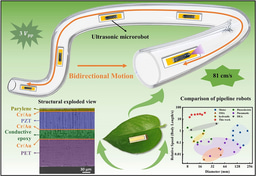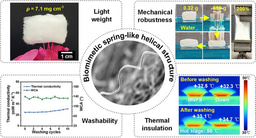
It is an exciting time for microbiologists who study the skin microbiome! High-throughput sample processing and bioinformatics workflows allow researchers to use simple swabs to collect and analyze the many microbial species that inhabit the skin, including bacteria, archaea, viruses, and fungi. Identifying these microorganisms, their roles, and factors that shape skin microbial communities offers enormous potential for applications related to the treatment of disease, development of probiotics and skin care, and discovery of potentially novel conservation options for endangered species.
The curiosity-driven research of Ashley Ross (undergraduate student, then MSc student in the Neufeld lab) skin microbiome began five years ago when she began studying the microbial biogeography of door handles across the University of Waterloo campus. Unsurprisingly, these surfaces were covered in skin bacteria from the multitude of campus dwellers and we were able to see patterns related to building usage. One experiment led to another, and we became intrigued by the skin microbiome of both humans and animals. Channeling the spirit of innovation of the University of Waterloo, we embarked on an extensive sampling effort to collect as many human and non-human animal skin swab samples that we could in Southwestern Ontario. In partnership with the Toronto Zoo, the African-Lion Safari, the Kitchener Waterloo Humane Society, the University of Guelph, and numerous farms and pet owners, we collected hundreds of mammalian skin swabs from 38 species. Key findings of this work indicated that co-habiting human partners can be linked via their skin microbiomes, and that parallels exist between mammalian skin microbes and host evolutionary histories.
Although many other microbiologists have swabbed and characterized microbes on skin from a plethora of animals around the world, we noticed that existing skin microbiome literature reviews focused primarily on humans. To help us better explore the broader vertebrate literature context of our work, we partnered with Aline Rodrigues Hoffmann (Texas A&M University) to summarize current knowledge related to the vertebrate skin microbiome. This collaborative review helped us appreciate that, despite extensive biological differences in skin composition among diverse vertebrate species, general trends were nonetheless apparent. For example, host species and geographic location are important for shaping skin microbiome composition. In addition, the external placement of this organ results in the presence of commensals that are transferred maternally, as well as other microbes immigrating via contact with soil, air, or water. Other factors that influence skin microbial communities among vertebrates include the biological sex of the host and whether the animal is in captivity or cohabiting with other animals of the same or different species.
Overall, we believe that synthesizing these trends in our review will help establish a strong basis for researchers that continually seek to explore exciting and timely new research directions within the context of the skin microbiome. For example, our review draws attention to a paucity of high-throughput sequencing studies conducted on reptile skin, despite these animals being afflicted with numerous and often-fatal skin diseases. In addition, amphibians are currently being decimated by chytrid fungi. Conservationists urgently need more tools for preventing the spread of this skin disease. Novel probiotics composed of microorganisms that resist the establishment of fungal infections could potentially improve the outlook for these animals. Probiotics also have the potential to help address other skin diseases that affect humans and other animals. For all of these reasons, we are excited to offer this review as a state-of-knowledge that can assist microbiome scientists as we delve further than "skin deep" into the vertebrate skin microbiome.
Follow the Topic
-
Microbiome

This journal hopes to integrate researchers with common scientific objectives across a broad cross-section of sub-disciplines within microbial ecology. It covers studies of microbiomes colonizing humans, animals, plants or the environment, both built and natural or manipulated, as in agriculture.
Related Collections
With Collections, you can get published faster and increase your visibility.
Harnessing plant microbiomes to improve performance and mechanistic understanding
This is a Cross-Journal Collection with Microbiome, Environmental Microbiome, npj Science of Plants, and npj Biofilms and Microbiomes. Please click here to see the collection page for npj Science of Plants and npj Biofilms and Microbiomes.
Modern agriculture needs to sustainably increase crop productivity while preserving ecosystem health. As soil degradation, climate variability, and diminishing input efficiency continue to threaten agricultural outputs, there is a pressing need to enhance plant performance through ecologically-sound strategies. In this context, plant-associated microbiomes represent a powerful, yet underexploited, resource to improve plant vigor, nutrient acquisition, stress resilience, and overall productivity.
The plant microbiome—comprising bacteria, fungi, and other microorganisms inhabiting the rhizosphere, endosphere, and phyllosphere—plays a fundamental role in shaping plant physiology and development. Increasing evidence demonstrates that beneficial microbes mediate key processes such as nutrient solubilization and uptake, hormonal regulation, photosynthetic efficiency, and systemic resistance to (a)biotic stresses. However, to fully harness these capabilities, a mechanistic understanding of the molecular dialogues and functional traits underpinning plant-microbe interactions is essential.
Recent advances in multi-omics technologies, synthetic biology, and high-throughput functional screening have accelerated our ability to dissect these interactions at molecular, cellular, and system levels. Yet, significant challenges remain in translating these mechanistic insights into robust microbiome-based applications for agriculture. Core knowledge gaps include identifying microbial functions that are conserved across environments and hosts, understanding the signaling networks and metabolic exchanges between partners, and predicting microbiome assembly and stability under field conditions.
This Research Topic welcomes Original Research, Reviews, Perspectives, and Meta-analyses that delve into the functional and mechanistic basis of plant-microbiome interactions. We are particularly interested in contributions that integrate molecular microbiology, systems biology, plant physiology, and computational modeling to unravel the mechanisms by which microbial communities enhance plant performance and/or mechanisms employed by plant hosts to assemble beneficial microbiomes. Studies ranging from controlled experimental systems to applied field trials are encouraged, especially those aiming to bridge the gap between fundamental understanding and translational outcomes such as microbial consortia, engineered strains, or microbiome-informed management practices.
Ultimately, this collection aims to advance our ability to rationally design and apply microbiome-based strategies by deepening our mechanistic insight into how plants select beneficial microbiomes and in turn how microbes shape plant health and productivity.
This collection is open for submissions from all authors on the condition that the manuscript falls within both the scope of the collection and the journal it is submitted to.
All submissions in this collection undergo the relevant journal’s standard peer review process. Similarly, all manuscripts authored by a Guest Editor(s) will be handled by the Editor-in-Chief of the relevant journal. As an open access publication, participating journals levy an article processing fee (Microbiome, Environmental Microbiome). We recognize that many key stakeholders may not have access to such resources and are committed to supporting participation in this issue wherever resources are a barrier. For more information about what support may be available, please visit OA funding and support, or email OAfundingpolicy@springernature.com or the Editor-in-Chief of the journal where the article is being submitted.
Collection policies for Microbiome and Environmental Microbiome:
Please refer to this page. Please only submit to one journal, but note authors have the option to transfer to another participating journal following the editors’ recommendation.
Collection policies for npj Science of Plants and npj Biofilms and Microbiomes:
Please refer to npj's Collection policies page for full details.
Publishing Model: Open Access
Deadline: Jun 01, 2026
Microbiome and Reproductive Health
Microbiome is calling for submissions to our Collection on Microbiome and Reproductive Health.
Our understanding of the intricate relationship between the microbiome and reproductive health holds profound translational implications for fertility, pregnancy, and reproductive disorders. To truly advance this field, it is essential to move beyond descriptive and associative studies and focus on mechanistic research that uncovers the functional underpinnings of the host–microbiome interface. Such studies can reveal how microbial communities influence reproductive physiology, including hormonal regulation, immune responses, and overall reproductive health.
Recent advances have highlighted the role of specific bacterial populations in both male and female fertility, as well as their impact on pregnancy outcomes. For example, the vaginal microbiome has been linked to preterm birth, while emerging evidence suggests that gut microbiota may modulate reproductive hormone levels. These insights underscore the need for research that explores how and why these microbial influences occur.
Looking ahead, the potential for breakthroughs is immense. Mechanistic studies have the power to drive the development of microbiome-based therapies that address infertility, improve pregnancy outcomes, and reduce the risk of reproductive diseases. Incorporating microbiome analysis into reproductive health assessments could transform clinical practice and, by deepening our understanding of host–microbiome mechanisms, lay the groundwork for personalized medicine in gynecology and obstetrics.
We invite researchers to contribute to this Special Collection on Microbiome and Reproductive Health. Submissions should emphasize functional and mechanistic insights into the host–microbiome relationship. Topics of interest include, but are not limited to:
- Microbiome and infertility
- Vaginal microbiome and pregnancy outcomes
- Gut microbiota and reproductive hormones
- Microbial influences on menstrual health
- Live biotherapeutics and reproductive health interventions
- Microbiome alterations as drivers of reproductive disorders
- Environmental factors shaping the microbiome
- Intergenerational microbiome transmission
This Collection supports and amplifies research related to SDG 3, Good Health and Well-Being.
All submissions in this collection undergo the journal’s standard peer review process. As an open access publication, this journal levies an article processing fee (details here). We recognize that many key stakeholders may not have access to such resources and are committed to supporting participation in this issue wherever resources are a barrier. For more information about what support may be available, please visit OA funding and support, or email OAfundingpolicy@springernature.com or the Editor-in-Chief.
Publishing Model: Open Access
Deadline: Jun 16, 2026




Please sign in or register for FREE
If you are a registered user on Research Communities by Springer Nature, please sign in